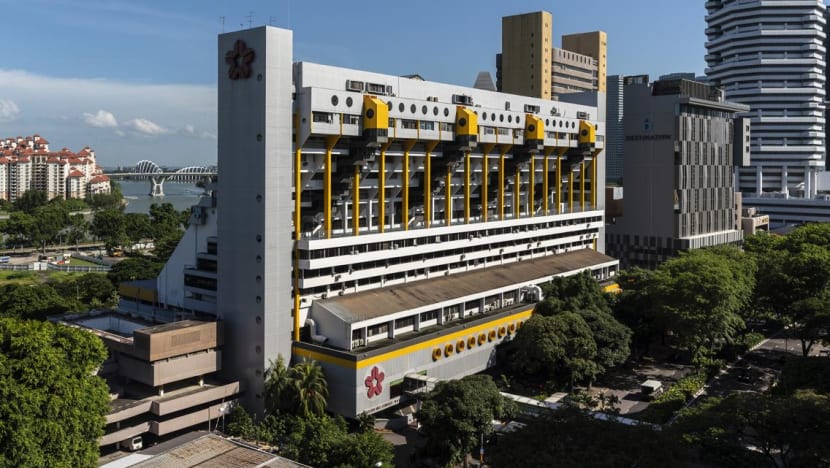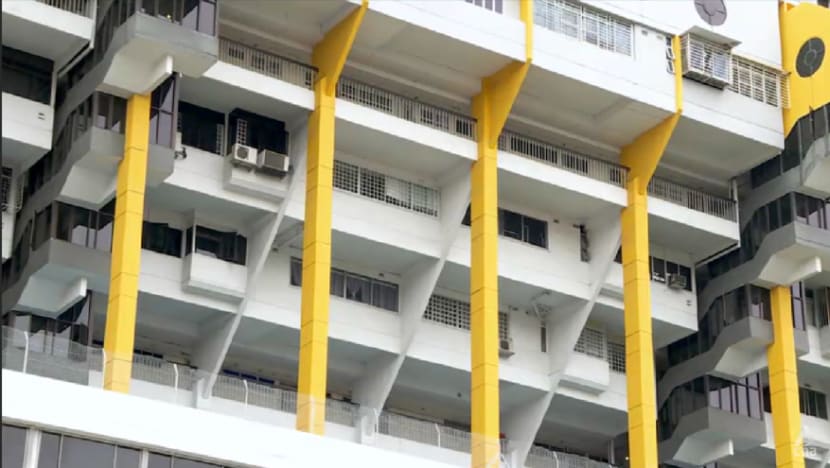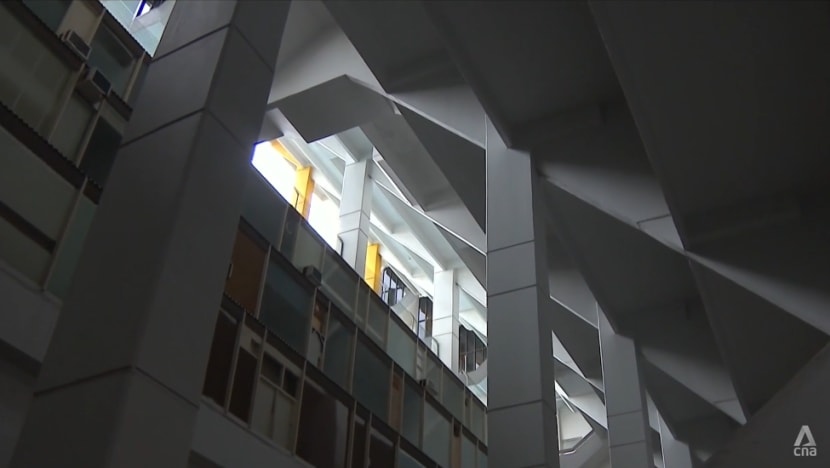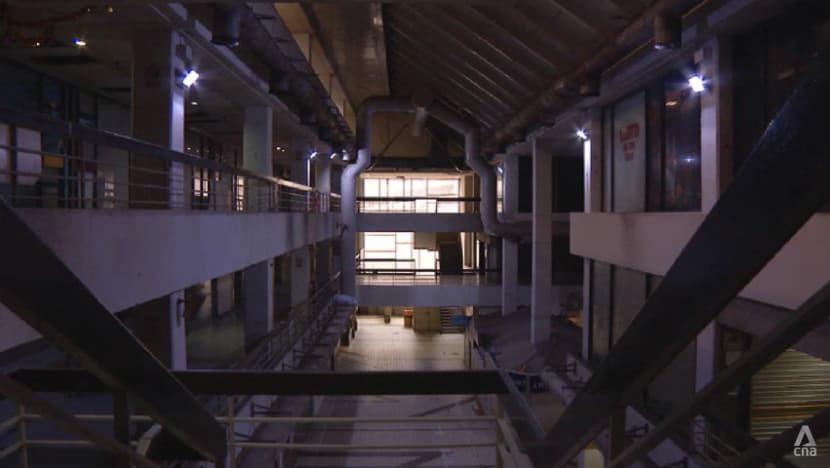Golden Mile Complex to keep iconic stepped terrace facade, retail atrium and play deck in restoration
Its new owners want to give the classic building the contemporary makeover it deserves while also conserving its heritage.

A view of Golden Mile Complex. (Photo: Darren Soh, Edmund Tie)
SINGAPORE: The iconic Golden Mile Complex will keep its facade and other key structural elements as part of its restoration.
This includes its signature stepped terrace profile, the podium, and the play deck with its golden columns and sloped roof.
The building along Beach Road was completed in 1974 and redefined modern urban living in the 1970s.
Until April this year, the complex – fondly known as "Little Thailand" – was home to shops, offices, and residential units. One of its penthouse apartments used to be occupied by one of its original architects William Lim.
Now, its new owners – a consortium comprising Far East Organization, Perennial Holdings and Sino Land – intend to polish the building while still paying homage to its rich history.
This follows months of research commissioned by the new owners and conducted by their restoration partners.
Studio Lapis, a heritage consulting firm engaged by the developers, said it wants to give the classic building the contemporary update it deserves while conserving its heritage.
“This building was built and designed according to 1970s building codes and regulations and also using materials produced at that time,” said Mr Ho Weng Hin, a founding partner at the company.
“It is extremely important to evaluate the serviceability and the durability of these finishes to come to an informed decision making process.”
While its exterior and structure are likely to be kept mostly intact, there are plans to retrofit the interior, including an overhaul of the building’s plumbing, electrical wiring and rainwater discharge pipes.
FIRST OF ITS KIND IN SINGAPORE
The building is the first of its kind to be marked for conservation by the Urban Redevelopment Authority (URA).
This means uncharted waters for the restoration specialists, who are looking at similar projects overseas that are best practice examples for the complex.

“We have very few precedents like Golden Mile Complex in Singapore. So we are looking towards international case studies in the United Kingdom and United States, where the conservation and design communities have been dealing with vintage buildings for two to three decades,” said Mr Ho.
Their work also requires an understanding of the building's construction and layout, so that they can suggest what to retrofit to make it more liveable.
The consultancy uses 3D scanning, infrared cameras and aerial drone scans to capture and examine the building's condition, including hidden areas under the exterior.
“Because of the special stepped profile of the building, we have to find the most ideal technology to adapt to the architectural constraints,” said Mr Ho.
“The engineering team will have to come up with solutions so that we do not do too much modification to the buildings. It will retain its look, feel and vibe, while introducing modern comforts.”
SUSTAINABILITY CONSIDERATIONS
Environmental and sustainable practices are also major considerations for the building’s makeover, he added.

The original architecture was designed to bring optimal daylight into the building, reducing its dependence on artificial lighting. Consultants have recommended preserving most features that allow for the presence of natural elements such as sunlight and wind.
“The stepped profile and level nine play deck allow quite a fair bit of daylight to penetrate into the interior public spaces such as the fourth storey atrium,” said Mr Ho.
“With this comes natural ventilation. You can’t air-condition such a vast space, it’s simply not tenable and not environmentally responsible to do so.”
Another aspect likely to be kept is the building’s monsoon windows, which are set slightly away from the parapet, leaving a tiny gap for airflow. The design allows for ventilation even during rainy days, without letting the rain in.
Mr Ho said his team is studying the feasibility of expanding on these passive climate design features.

Stairs running from the fourth to the top floor, the retail atrium, and ceramic mosaics have also been identified as important aesthetic and functional parts of the original building that should be retained.
“There are a lot of ceramic tiling mosaics used in this building, which is really a characteristic of these mid-century modernist buildings. We are studying the condition, seeing how much is intact and can be saved,” he said.
SETTING THE STANDARD
Mr Ho hopes the revamp of Golden Mile Complex will set the standard for refreshing and conserving other buildings in Singapore from the same era.
“The most meaningful aspect of conservation is not trying to freeze things and make it into a museum. It's about a process of managing change sensitively and striking the right balance,” he said.
“We have to move with the times, but how to manage the process, how to come to informed decisions, these have to be underpinned by solid research.
“We are trying to benchmark ourselves against the best examples of upgrading, of retrofitting a building of such a scale to meet contemporary uses but not losing its character and flavour that give it its significance in the first place.”
Work on marking elements for preservation started last October and are ongoing.




















